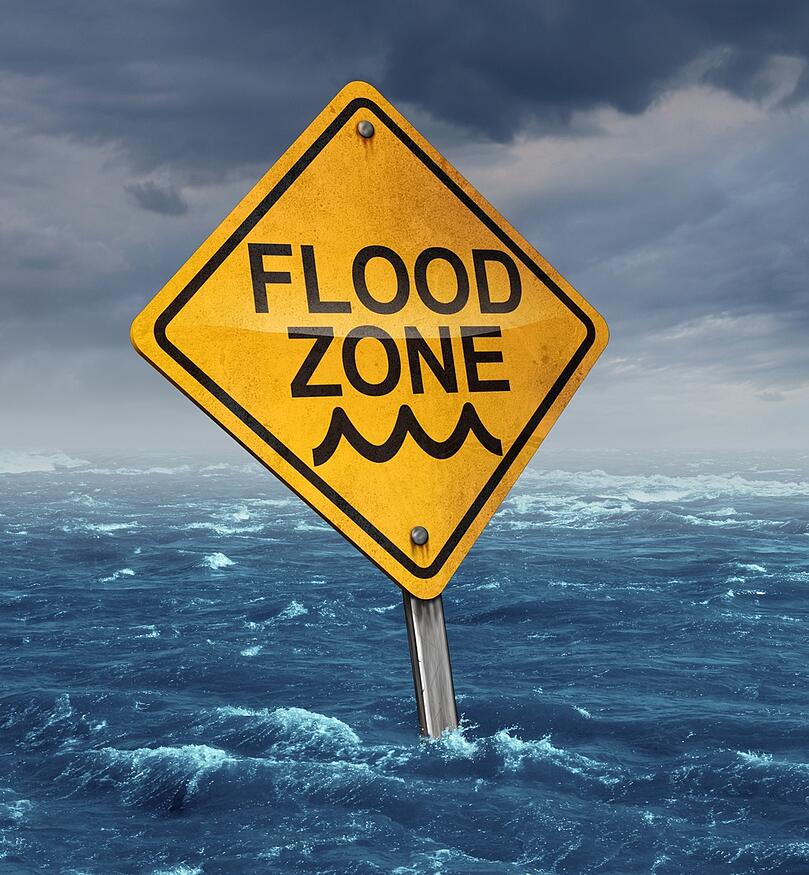
Written by Peter Normand, Commercial Lines Account Executive and RiSC Consultant, CLCS
According to a 2020 report from the First Year Foundation, there were 336,000 properties in Massachusetts alone that were at some level of risk for flooding. This number is 65% higher than the existing flood maps indicate. The heavy rains of this past summer and the claims that followed got me wondering what the future holds. We are beginning to feel the impacts of climate change in more severe and less predictable weather. How valid are our flood maps? What can property owners do to protect their property in an uncertain future? If you haven’t talked about flood insurance with your insurance agent yet, now is the time.
Banks require flood insurance on all properties that are located in a flood zone per existing flood maps. Why do they do this? Commercial and homeowners policies exclude flood as a cause of loss. Nearly all of my commercial insurance clients who have flood insurance have purchased it to satisfy a loan requirement. Nearly everyone else is rolling the dice – most stating that that since they aren’t in a flood zone, its not an issue. After a very wet summer the conversation is changing and flood is on everyone’s mind.
Let’s start off by defining what a flood is. Floodsmart.gov defines it as this: “Flood insurance covers losses directly caused by flooding. In simple terms, a flood is an excess of water on land that is normally dry, affecting two or more acres of land or two or more properties.” Just because there is water in your basement doesn’t mean it’s a flood. In fact, water seeping into a foundation without the above definition being met, would not be covered by flood insurance. When determining whether or not there is coverage, the cause of the flooding that damages your property does matter.
On the market side, there are more options than ever with more carriers offering a flood product. This leads to more flexibility for our insureds. For example: some markets allow for multiple properties on a single policy, some carriers offer limits in excess NFIP (National Flood Insurance Program) limits to adequately insure the value of the property, there are Replacement Cost (RC) and Actual Cash Value (ACV) valuations, and more competition has created market pressure on premiums – especially for properties outside of flood zones.
With changing weather patterns and other unknowns, it’s reassuring to know that there are options. If you haven’t considered flood in the past, or have been putting it off, now is the time to talk to you insurance agent. There is an expanding market with options to meet your specific exposures and needs. To learn more about flood insurance, and/or to review your risks and coverage, please email me at pnormand@webberandgrinnell.com or call me at 413-570-1964.


